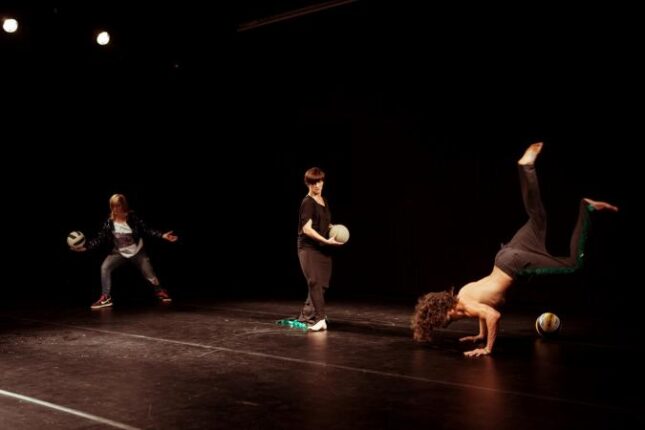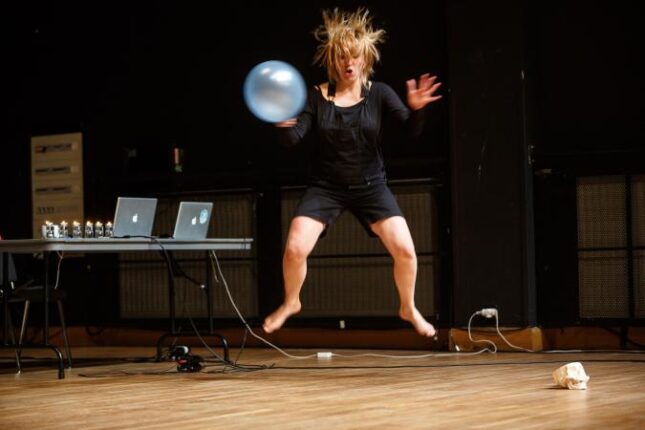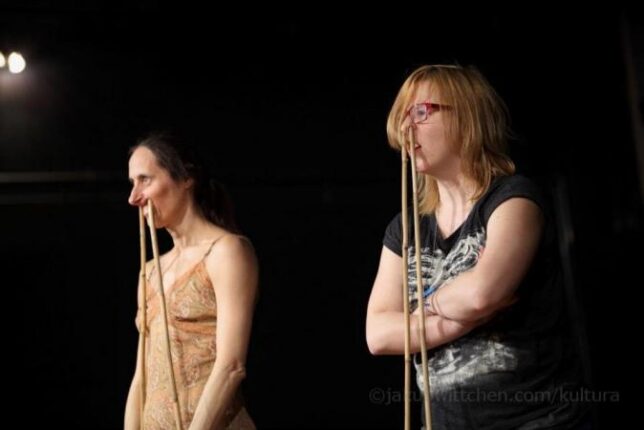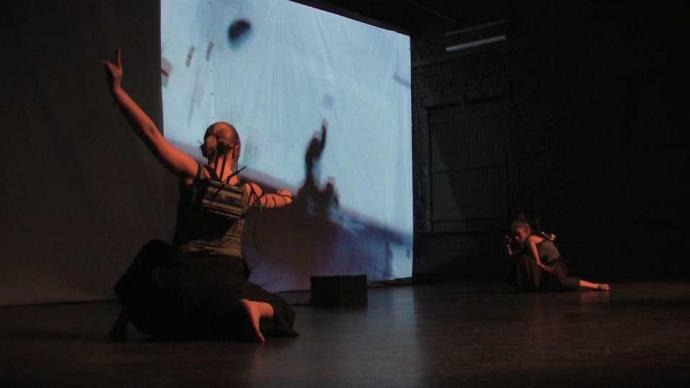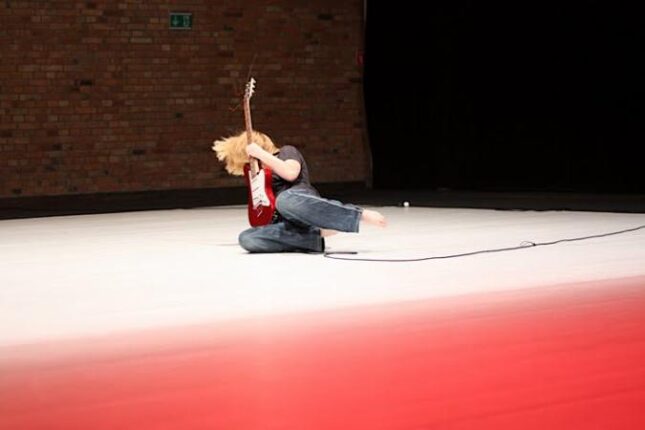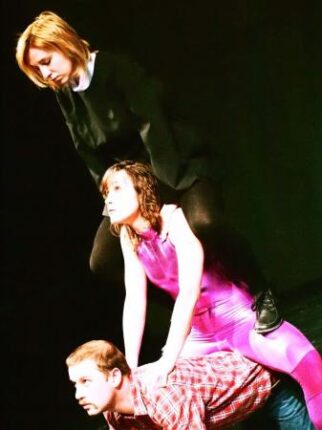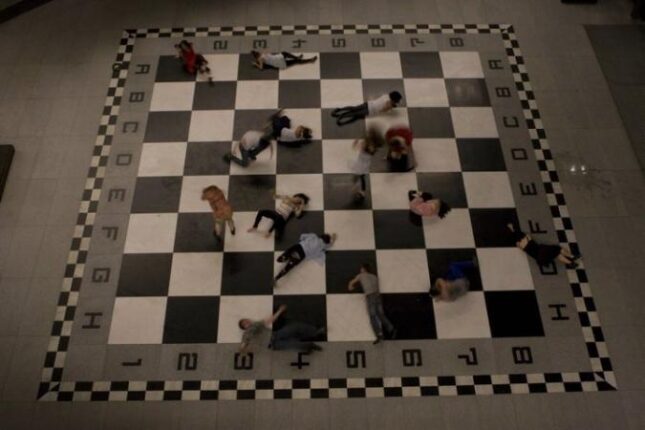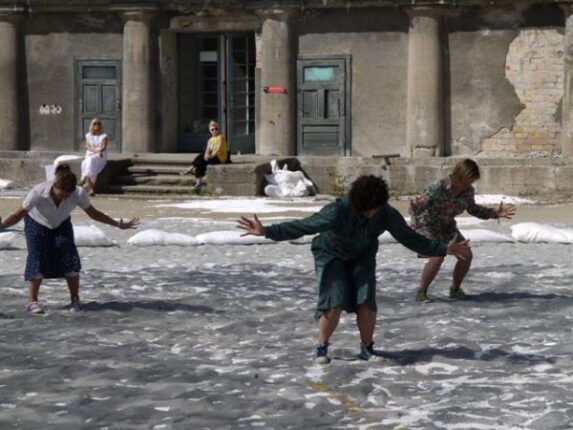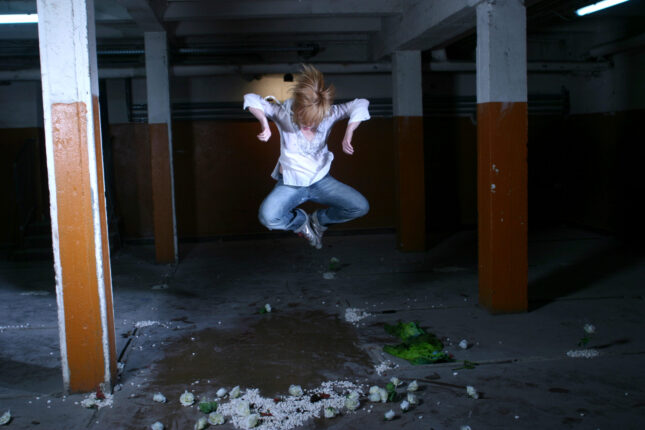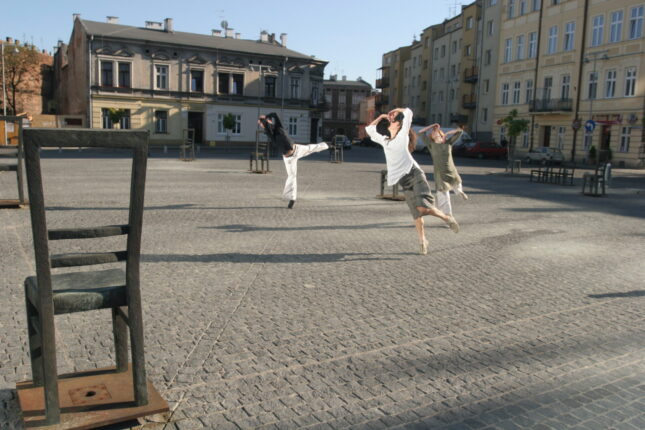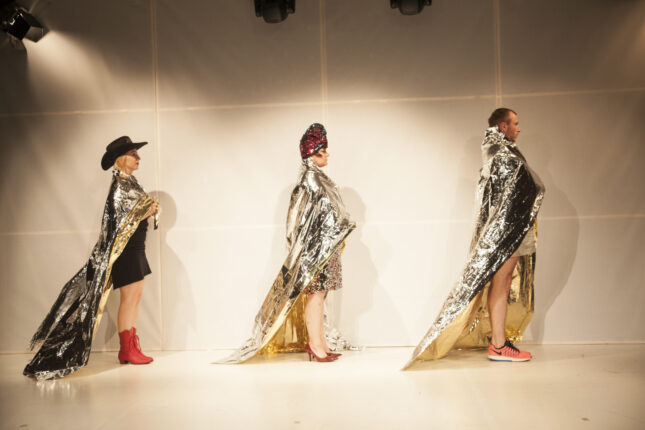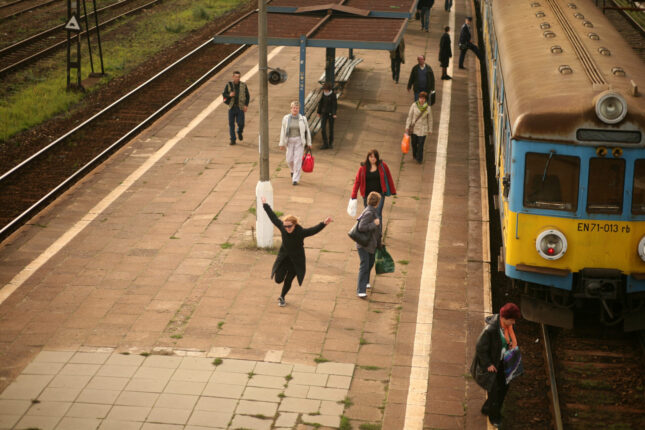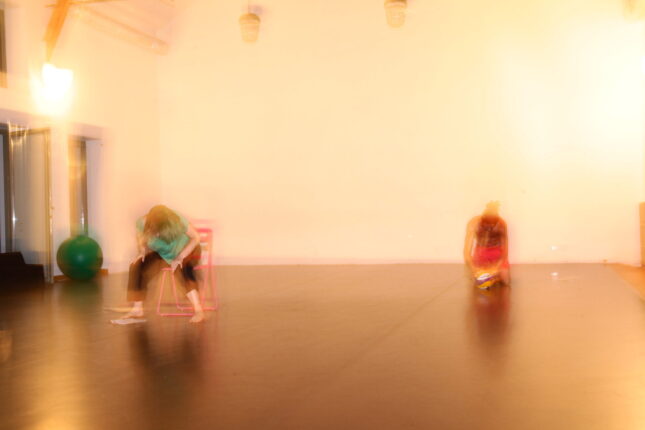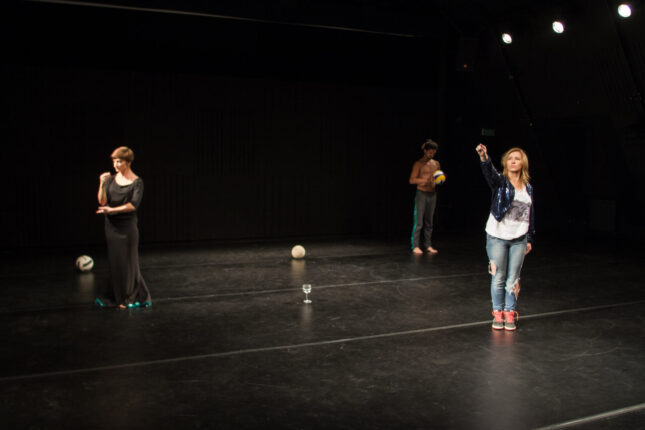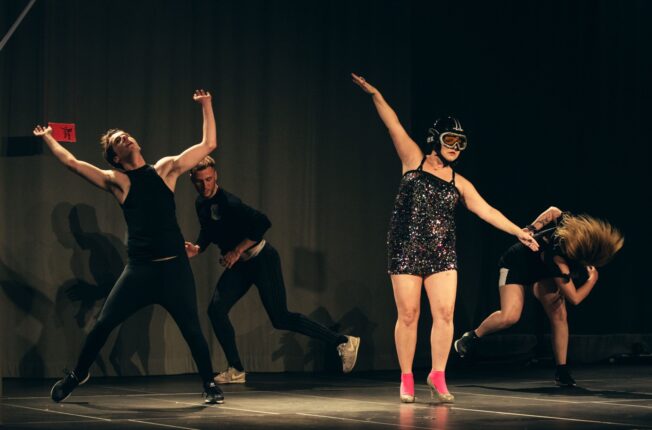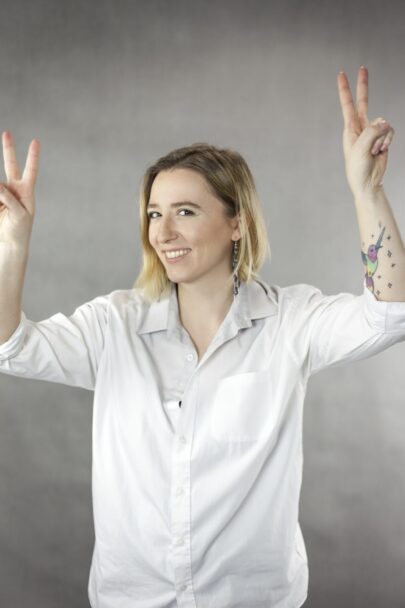Magdalena Przybysz is a dancer, performer and choreographer. She graduated in applied psychology from Jagiellonian University in Kraków and is a qualified NLP trainer.
She began her dance career at Iwona Olszowskas Experimental Dance Studio (EST). Together with the group she created and danced in A streetcar named desire, Ocean Miasta [City Ocean], Płaczące krzesła [Crying Chairs]. She also co-oragnised and participated in workshops on contemporary dance, improvisation, contact improvisation and body awareness techniques: Bob Eisen (USA), Eckhard Muller (Germany), Milan Kozanek (Slovakia), Joan Laage (USA), Ray Chang (USA), Jaffrey Carrey (France), Pierre Deloche Company (France), Tal Avni (Israel), Steve Baats (Ireland) and Ester Gaal (Hungary).
In 2005, apart working with the ETS, Przybysz began to produce her independent dance projects verging on dance, performance, science and research on human perception. She continues her collaboration with representatives of different arts, experimenting with sound, video and movement, including: video artist Zorka Wollny (Muzeum Museum, Ikus Reiknub), musician Łukasz Zygmunt (Smells Like Teen Spirit, eleckriCity), VJ Collective ElektroMoon Vision (… bez Lennona without Lennon), Divadlo Na Perone (Granice Borders).
In 2009, she began to develop new concepts at Poznańs dance centre Old Brewery New Dance during her Solo Project residency. Guided by Hooman Sharifi (Norway), she produced a solo entitled Mój Poland Drive [My Poland Drive], a story of her childhood in Nowa Huta, an industrial district of Kraków, during the Communist martial law and then early political transformation. In the piece she ironically confronts the clichés of the collective memory of past events with the perspective of a few-year-old girl. Dance is combined with live guitar music, it mixes realities and motifs, as Witold Mrozek wrote in one of his reviews. To-date the solo has been shown in Poznań, Warsaw, Ostrale, Gdańsk, Berlin (Tanztage Festival) and Frankfurt (UNITHEA Festival).
The artist has also participated in the Alternative Dance Academy in Poznań, taking part in creative coaching sessions run by a range of international artists, i.e. Arkadi Zaides (Israel), Peter Pleyer (Germany), Simone Aughterlony (Belgium), Chris Haring (Austria), Ria Higler (Netherlands), Joseph Frucek (Slovakia), Jonathan Burrows (UK), Michael Schumacher (USA), Raimund Hoghe.
In 2010 Przybysz collaborated with Anna Szwajgier and Zorka Wollny on Przesilenie letnie [Summer solstice], which was named the best site-specific project in a competition held by Fortis and the Art Stations Foundation during the Malta Festival in Poznań.
In 2011 Magdalena Przybysz was involved in the following projects:
She danced the role of rebellious nun in Dominika Knapiks Testament Optymisty [An Optimist’sLast Will] based on Sławomir Mrożeks novel. The piece was premiered at Theatre Łaźnia Nowa in Kraków in February 2011, and was also shown during the Politics of Dance showcase at the Theatre Institute in Warsaw and the International AURA Festival in Kaunas.
She collaborated as dancer and choreographer with Poznań-based composer Patryk Lichota and dancer Marta Romaszka on an intermedia movement and sound experiment using a strange loop described by Hofstatder in his book Strange Loop. The project premiered at Theatre Ósmego Dnia in Poznań, and was also shown at the Kontrapunkt Festival in Szczecin and the Audio Art Festival in Kraków. It was awarded a grant from the Institute of Music and Dance in Warsaw under the programme Stage for Dance (presentations at the Centre for Contemporary Art in Warsaw, in Toruń and in Lublin).
She choreographed the dance performance Wytnij-wklej [Copy-Paste] based on a film documentary entitled Jugów-opowieści przesiedlonych kobiet [Jugów: Tales of Displaced Women]. The piece premiered in September at the European Culture Congress in Wrocław.
She developed a lecture performance with Iwona Olszowska on selected aspects of the history of contemporary dance, entitled Serce zRozum.
On 14 February 2012 Przybysz premiered her choreography Museum Theatre at Museum Abteiberg in Moenchengladbach, Germany. The piece dwells on the ritual undercurrent of life and movement in a museum, and is a collaboration with director Zorka Wollny and composer Anna Szwajgier.
In 2013, thanks to a scholarship awarded by the Polish ministry of culture and two artistic residencies at Club Żak in Gdańsk, Poland, and at Freihendelszone in Cologne, Germany Przybysz developed a collage of music and movement entitled Dancing for the birds, they watching us. Her artistic coach on the project was an enfant terrible of contemporary dance, Trajal Harrel. The piece investigates the work of the American group Fluxus, in particular the confrontation of pop culture and alternative culture, and will premiere in Kraków as part of the Polifonie [Polyphonies] programme (A Cricoteka project Kto inspirujeTadeusz Kantor Who inspires Tadeusz Kantor).
In September 2013 Przybysz took part in the project Kilka kroków do Lutosławskiego [A Few Steps to Lutosławski], developed by the Forte Foundation and the Burdąg Foundation, showing, together with Barbara Bujakowska and Maciej Rumian, a choreographic etude set to Lutosławskis Variations on a Theme of Paganini, entitled Variations on a Theme of Variations on a Theme of Paganini.
Magdalena Przybysz regularly publishes in the feminist journal Zadra, writing about women who are part of the history of dance: Pina Bausch, Isadora Duncan, Mata Hari, Colette, Marta Graham.
Currently, together with Dr Tomasz Mazur, Przybysz is working on a philosophical dance project called You KANT Dance, which will conclude during the Warsaw Dance Night (29 November 2013).
